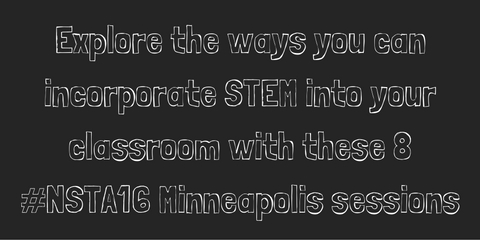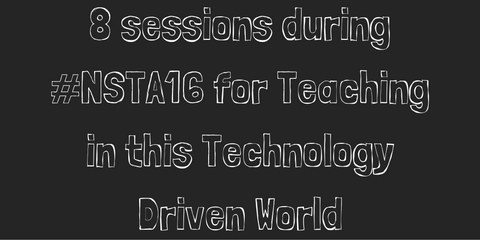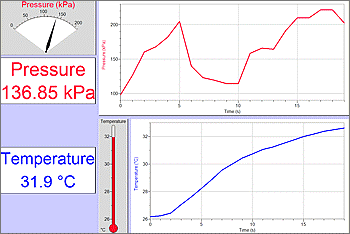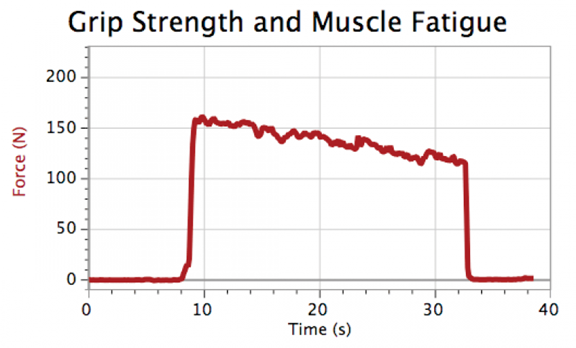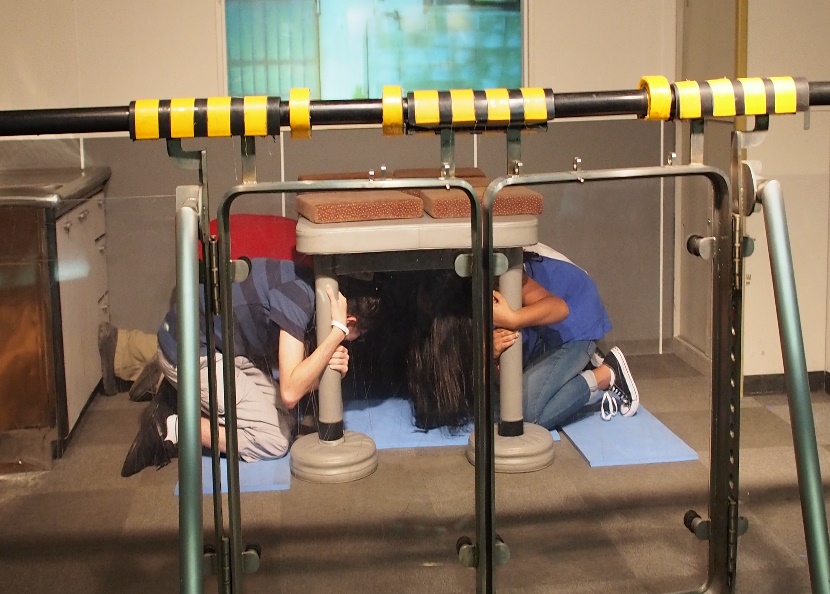Explore the ways you can incorporate STEM into your classroom with these 8 #NSTA16 Minneapolis sessions
By Korei Martin
Posted on 2016-08-31
The upcoming NSTA Minneapolis conference, taking place October 27-29, is the place to be for teachers looking for ways to incorporate STEM in their classroom. STEM can be a powerful unifying theme across the curriculum and in many settings. STEM provides an opportunity for collaboration among teachers, disciplines, and schools, as well as postsecondary, informal education, and community partners. Educators attending sessions in this strand will explore models of integrated STEM education programs, learn strategies to productively STEMify lessons, and investigate how to effectively engage students. Check out the 8 sessions below to see what #NSTA16 has for your STEM implementation needs.
Building Bridges: Engineering in the Elementary Classroom (Thursday, October 27 12:30 PM – 1:30 PM)
- Learn about a unique collaboration that engaged students in STEM, literacy, and the arts. Participate in a portion of our lessons and experience firsthand the power of collaboration and building bridges together.
If They Make It, They Will Learn: The Maker Movement and K–12 STEM (Thursday, October 27 3:30 PM – 4:30 PM)
- “Making” is more than tinkering, and the Maker Movement offers powerful, project-based lessons for learning STEM in K–12 classrooms.
Inventing Is Just Plain Fun (for All)! (Thursday, October 27 5:00 PM – 6:00 PM)
- Gain experience leading a design challenge and incorporating invention to provide engaging cross-curricular opportunities using a variety of community resources.
Laser Cutters + 3D Printers + Vinyl Cutters = Bolstered K–3 Math Curriculum (Friday, October 28 11:00 AM – 11:30 AM)
- The Maker Movement is spreading across the country. Laser cutters, 3D printers, vinyl cutters, and more are starting to show up in elementary schools. Connecting students with experiential learning not only bolsters student engagement, but also solidifies learning through making. Join in for simple ways to connect the Maker Movement, 3D printers, laser cutters, and vinyl cutters to K–3 math standards.
Incorporating STEM Across the Curriculum Through Inquiry (Friday, October 28 3:30 PM – 4:30 PM)
- Come learn how to incorporate STEM across the curriculum by taking part in a few traditional lessons, then shifting them to inquiry-based lessons.
The Transition—From STEM Student to STEM Teacher (Friday, October 28 5:00 PM – 5:30 PM)
- First year teachers who went through a STEM teacher preparation program will share their experiences transitioning from being a STEM student to a STEM teacher.
Quake-Proof: Applying Newton’s Laws of Motion to Building Design (Saturday, October 29 9:30 AM – 10:30 AM)
- Through scientific inquiry, engineering practices, and mathematical calculations, students apply laws of motion to designing and testing earthquake-proof structures on simply made shake tables.
Engineering from Every Angle: Engineers as Proficient in Emotional Intelligence as Well as Analytical Skills (Saturday, October 29 11:00 AM – 12:00 PM)
- Successful engineers are proficient in engineering and human relationship skills. Join us for creative ways to include emotional intelligence in engineering that enhances student learning.
Register to attend here—and don’t forget, NSTA members get a substantial discount!
2016 Area Conferences
National Conferences
- Los Angeles, California: March 30–April 2, 2017
- Atlanta, Georgia: March 15–18, 2018
- St. Louis, Missouri: April 11–14, 2019
- Boston, Massachusetts: March 26–29, 2020
- Chicago, Illinois: April 8–11, 2021
Follow NSTA
8 sessions during #NSTA16 for Teaching in this Technology Driven World
By Korei Martin
Posted on 2016-08-31
The upcoming NSTA Minneapolis conference, taking place October 27-29, is the place to be for teachers looking for new ways to teach in this technology driven world. Students and teachers have access to many forms of technology and these technologies can be effective tools to access information, deliver instruction, communicate ideas, connect with people from around the world, and build professional learning networks. Educators attending these sessions will explore instructional materials, technologies and strategies for effective learning for students and adults, and responsible use of digital resources and processes. Below are 8 sessions that every science educator attending the area conference should go to.
Searching for Spielberg (Thursday, October 27 8:00 AM – 9:00 AM)
- Providing examples from physical and life science, as well as using multiple types of devices and apps, we will share how student-created videos can improve peer review and scientific communication, encourage critical thinking, and enhance data collection.
NASA’s Eyes on the Solar System: Bringing the Planets to Your Classroom’s Computers (Thursday, October 27 5:00 PM – 6:00 PM)
- Bring the solar system to your classroom using this free online tool from NASA. Explore planets, spacecraft, and more!.
Citizen Science: Projects and Activities to Engage Students in Authentic Science Research (Friday, October 28 9:30 AM – 10:30 AM)
- Explore citizen science projects that can engage your students in authentic science data collection and investigation as they contribute to big datasets.
Engaging Students in Science through Virtual Field Trips (Friday, October 28 12:30 PM – 1:30 PM)
- Tap into how to use social media and internet resources to design a “virtual field trip” for your students through the integration of science, ELA, and social studies
Evolution for Educators (Friday, October 28 3:30 PM – 4:30 PM)
- Explore how the Teacher Institute for Evolutionary Science strives to meet the needs of middle school science teachers as they cover the NGSS disciplinary core idea: Biological Evolution: Unity and Diversity.
Exploring the Trade-Offs and Payoffs of Sustainable Bioenergy Through Simulations and Field Data (Saturday, October 29 8:00 AM – 9:00 AM)
- Students play an online game and analyze current data from university research to construct arguments about the most sustainable methods for growing bioenergy crops.
Dissecting Animals? Frog-get About It! (Saturday, October 29 9:30 AM – 10:30 AM)
- Get hands-on experience with dissection software programs, covering educational efficacy, economic benefits, and current laws/policies regarding the use of animals in science.
Using News Media to Learn About Science in the Connected Science Classroom (Saturday, October 29 11:00 AM – 12:00 PM)
- The new science framework calls for increased use of news media, including online news. We will examine issues with this and provide some solutions.
Register to attend here—and don’t forget, NSTA members get a substantial discount!
2016 Area Conferences
National Conferences
- Los Angeles, California: March 30–April 2, 2017
- Atlanta, Georgia: March 15–18, 2018
- St. Louis, Missouri: April 11–14, 2019
- Boston, Massachusetts: March 26–29, 2020
- Chicago, Illinois: April 8–11, 2021
Follow NSTA
Vernier Go! Link: Hand Dynamometer
By Edwin P. Christmann
Posted on 2016-08-31
Vernier’s Go! Link is a single-channel USB interface used to connect many Vernier sensors directly to a Windows or Macintosh computer. This device can be connected into a USB port and can be used to connect of a variety of sensors. For this review, we used a Hand Dynamometer, which is designed to measure grip strength.
To begin using Vernier’s Go! Link, the first step is to load a software package known as Logger Lite. Logger Lite is Vernier’s free data-collection software system and includes graphics (see Figure 1). To load Logger Lite onto your device (e.g., laptop, microcomputer, etc.) go to [http://www.vernier.com/products/software/logger-lite/] for an upload. Another option worth consideration is the possibility of using Logger Pro, which although it is more versatile, it comes at a cost of $249.00. The Logger Pro software can be found at:
Logger Pro: http://www.vernier.com/products/software/lp/
Figure 1. Sample Logger Lite Display
Vernier Go! Link
The Go!Link USB sensor interface is a quick and affordable way to get started with data-collection technology. It’s a single-channel interface that connects most Vernier sensors to your computer or Chromebook USB port.

Setting up data-collection experiments is as simple as 1-2-3:
- Plug the Go!Link to a USB port and a sensor into the Go!Link.
- Start the data-logging software.
- Click on the “Collect” button to see a real-time graph!
Image 1. Vernier’s Hand Dynamometer
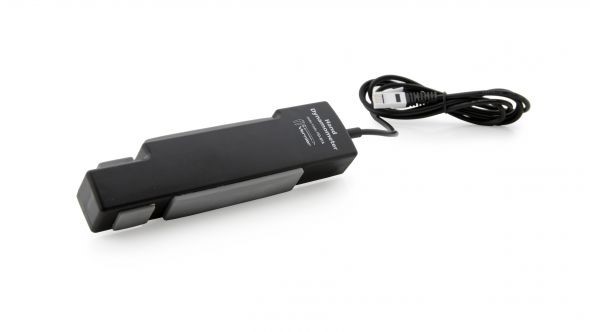
Using the Hand Dynamometer
To use the Vernier’s Hand Dynamometer, first zero it (which is an option found at the top of the menu) to define the base setting. Next, while holding the Hand Dynamometer upright, squeeze with as much force as possible and begin data collection. The force is measured in Newton units, which provides a great opportunity for students to discuss metric conversions. Once the data is collected, you will be able to examine the data in a number of ways to have students engage in research goals. For example, Logger Lite has built-in statistics applications.
Calculate Statistics and Speculate
One of the great features of Logger Lite is that it has a built-in statistics calculator. Under Analyze, if you select Statistics, students will be able to find the mean and median grip force, as well as the minimum and maximum grip force (See Figure 2). Therefore, students can compare the range of grip strength over time. Some questions for students to consider are:
- At what point does grip strength begin to decrease?
- Is the grip strength in your right hand higher than your left hand?
- If the test is repeated, can grip strength be increased by doing certain exercises?
Figure 2. Grip Strength and Muscle Fatigue
Conclusion
Having students collect data with Vernier’s Go! Link and Hand Dynamometer is an excellent technology-based inquiry device that results in meaningful scientific engagement and is commensurate with tenets of the Internation Society for Technology Education Standards for Students(ISTE, 2016).
Once again, Vernier has developed a device that can be used to is integrate the NRC Standards (i.e., Standards A & E) and shows students how using the proper scientific tools to gather data can be both relevant and exciting. Undoubtedly, when coupled with the Hand Dynamometer, the Vernier Go! Link is a durable and an easy to use device that makes learning interesting for students.
Moreover, by using current technologies, students can take accurate measurements and engage in technology-based inquiry. For example, the interactive graphs that can be generated by Logger Lite software can help students to interpret the results of their experiments and can be used to create professional laboratory reports. Based on our experience, the Vernier Go! Link with the Hand Dynamometer gives teachers an excellent tool to use in their science classroom.
Relevant ISTE Standards
Standard 3: Research and Information Fluency
Students apply digital tools to gather, evaluate, and use information.
- Plan strategies to guide inquiry.
- Locate, organize, analyze, evaluate, synthesize, and ethically use information from a variety of sources and media.
- Evaluate and select information sources and digital tools based on the appropriateness to specific tasks.
- Process data and report results.
Standard 4: Critical Thinking, Problem Solving, and Decision making
Students use critical thinking skills to plan and conduct research, manage projects, solve problems, and make informed decisions using appropriate digital tools and resources.
- Identify and define authentic problems and significant questions for investigation.
- Plan and manage activities to develop a solution or complete a project.
- Collect and analyze data to identify solutions and/or make informed decisions.
- Use multiple processes and diverse perspectives to explore alternative solutions.
Cost:
Hand Dynamometer: $99
Go!Link: $61
User Manual:
http://www.vernier.com/manuals/hd-bta/
Video Link showing Basic Capabilities in a test of grip strength comparison:
http://www.vernier.com/training/videos/play/?video=35
References:
ISTE 2016. ISTE Standards for Students
Edwin P. Christmann is a professor and chairman of the secondary education department and graduate coordinator of the mathematics and science teaching program at Slippery Rock University in Slippery Rock, Pennsylvania. Anthony Balos is a graduate student and a research assistant in the secondary education program at Slippery Rock University in Slippery Rock, Pennsylvania.
Surveying student perceptions
By Mary Bigelow
Posted on 2016-08-30
 I want to study my middle school students’ perceptions of what and how they are learning in science. Do you have any suggestions other than a traditional survey? —R., Ohio
I want to study my middle school students’ perceptions of what and how they are learning in science. Do you have any suggestions other than a traditional survey? —R., Ohio
I found some research on the topic at Drawn to Science: Studying Science Teaching and Learning Through Drawings. The authors examined “how the science teaching identity of the teacher interns/teachers changed over time” based on their experiences. Rather than a traditional questionnaire, this study used drawings as evidence. Periodically, the teacher-participants responded to two prompts:
- Draw yourself teaching science
- Draw your students learning science
The methodology and the scoring rubric are on the website. It’s interesting to examine how drawings represent a teacher’s self-image of the teaching and learning processes and the perceived roles of teachers and students in these processes.
Another part of the website targets educators, offering:
- Lesson plans with suggestions for asking students to draw their interpretations of science learning. Follow-up discussion questions are included.
- A description of the action research process and how drawings can be a data tool.
These lessons could be used several times throughout the year, perhaps with student notebooks, to monitor how students’ perceptions change over time and reflect on how student perceptions align with yours. It might be interesting to draw something yourself to compare to the students’ work.
But I wouldn’t discount traditional surveys. Although paper-and-pencil surveys are time-consuming to analyze, online tools (such as Google Docs) can efficiently survey students and aggregate the results into a spreadsheet document. The same survey can be used for different classes and at multiple times during the year to track student responses for your analysis and reflection.
From a clock’s ticks in the morning to a father’s snores at night, sounds are everywhere. That’s what an attentive boy discovers as he listens his way through a school day. He perceives that sounds can be loud or soft and low or high. And sometimes, he notices, things like butterflies and wiggling worms are so quiet, he can’t hear them at all.
From a clock’s ticks in the morning to a father’s snores at night, sounds are everywhere. That’s what an attentive boy discovers as he listens his way through a school day. He perceives that sounds can be loud or soft and low or high. And sometimes, he notices, things like butterflies and wiggling worms are so quiet, he can’t hear them at all.
The TOMODACHI Academy: Friendship Beyond Borders
By Guest Blogger
Posted on 2016-08-29
How can two countries with vast cultural differences maintain a relationship in which they can share ideas on how to improve their educational system and focus on STEM literacy? That is the goal of a partnership between the United States and Japan—two superpowers willing to borrow each nation’s system and experience to improve one’s own.
In August 2016, U.S. and Japanese teachers and students witnessed the sharing of ideas between the two countries through the TOMODACHI Toshiba Science & Technology Leadership Academy (TTA). The TTA is a one-week, cross-cultural science, technology, engineering, and math (STEM) exchange and leadership program for 16 high school students and eight teachers from Japan and the United States. High school students and teachers who promote strong achievements in science and mathematics education and international student exchanges were selected as the Japanese counterparts. The program was held from July 31 to August 7, 2016, at Yoyogi National Olympic Center.
Two Teams, Two Challenges
This year’s program presented two challenges to student teams. One was to propose solutions for developing a disaster-resilient, smart community of the future using learning experiences that are central to the Next Generation Science Standards (NGSS) and the engineering design process. The second was to build a tower with miniature elevators that show the student’s engineering and creative skills. Both challenges were presented to an audience wherein the latter was critiqued by a panel of judges.
(Tower building)
Aside from working on their projects, participants were also given a chance to visit different sites in Tokyo specifically selected so that they could get inspiration in terms of engineering design and smart community to help them with their projects. Several sessions leading to the group’s final presentation were planned throughout the week. Team building, ice-breaking sessions, engineering design lessons, field trips, and group planning kept everyone busy. All the sessions had an impact on the group’s smart community project, because students applied the concepts learned from all the sessions leading up to their final presentation.
As the groups were starting to plan how to make their smart communities resilient to natural disasters, participants went to the Life Safety Center where they experienced a hurricane with wind speeds of 30km/hour, a magnitude 7 earthquake, and a simulated fire from a burning room. This experience gave the groups ideas on how to make their communities disaster resilient.
(Earthquake and fire simulations)
Smart, Sustainable, Resilient
In relation to preparing for natural disasters like earthquakes, the group visited the Tokyo Skytree, where the engineer of the tower discussed the properties and the structural design implemented for the tower to withstand strong winds and earthquakes.
A smart community of the future should be energy efficient and sustainable. The visit to the Toshiba Science Museum showcased an efficient building energy management system. Participants were exposed to smart homes; buildings equipped with a system to dramatically reduce energy consumption and make them environmentally friendly; technological innovations in transportation and alternative sources of energy including thermal energy and superconductors. This information gave the students more knowledge and confidence in building their smart communities.
One of the interesting lessons that we had involved the use of drones and the manner in which they can be used to produce an evacuation map (using drone-taken footage). Students were tasked with using an app to produce a 3D map of the surrounding buildings in Yoyogi Center. This session helped students learn how mapping can be an important tool for disaster preparedness.
(Introduction to using drones in mapping for disaster preparedness by Professor Taichi Furuhashi of Aoyama Gakuin University @mapconcierge)
But the week was not all work as we toured different sites showing Japan’s cultural heritage. We visited Asakusa Sensoji and Meiji Shrine and it opened our eyes as to why the Japanese are proud of their culture and traditions. The places we visited show history connecting the present and the future.
(U.S. and Japanese teachers at Asakusa)
To optimize the teacher experience, the teacher session was added to this year’s TTA. The sessions focused on discussions connected to implementing the NGSS and flipped classroom strategies. We were also introduced to Edpuzzle and Mix software as tools that can be used in a flipped classroom. In addition, the U.S. teachers had an open dialogue with the Society of Japan Science Teachers on science and engineering educational trends and best practices focusing on the NGSS.
(Teacher session with SJST and NSTA’s Dr. David Evans)
This program was designed to foster closer ties between American and Japanese teachers and students, nurture a strong sense of STEM literacy, and to inspire the use of science and technology to address some of the world’s most complex issues in the future. At the end of the program, we not only achieved our goal but transcended beyond borders with a common aspiration–to learn from each other in bettering our future.
To showcase everything that we did for the week, we created this video, which I invite you to watch: https://vimeo.com/177743307.
Arlene Ramos teaches at the High School for Health Professions and Human Services in NYC
For more photos from this year’s TOMODACHI Toshiba Science & Technology Leadership Academy please click here.
The mission of NSTA is to promote excellence and innovation in science teaching and learning for all. Learn more about the Next Generation Science Standards at theNGSS@NSTA Hub.
Future NSTA Conferences
2016 Area Conferences
Follow NSTA
How can two countries with vast cultural differences maintain a relationship in which they can share ideas on how to improve their educational system and focus on STEM literacy? That is the goal of a partnership between the United States and Japan—two superpowers willing to borrow each nation’s system and experience to improve one’s own.



